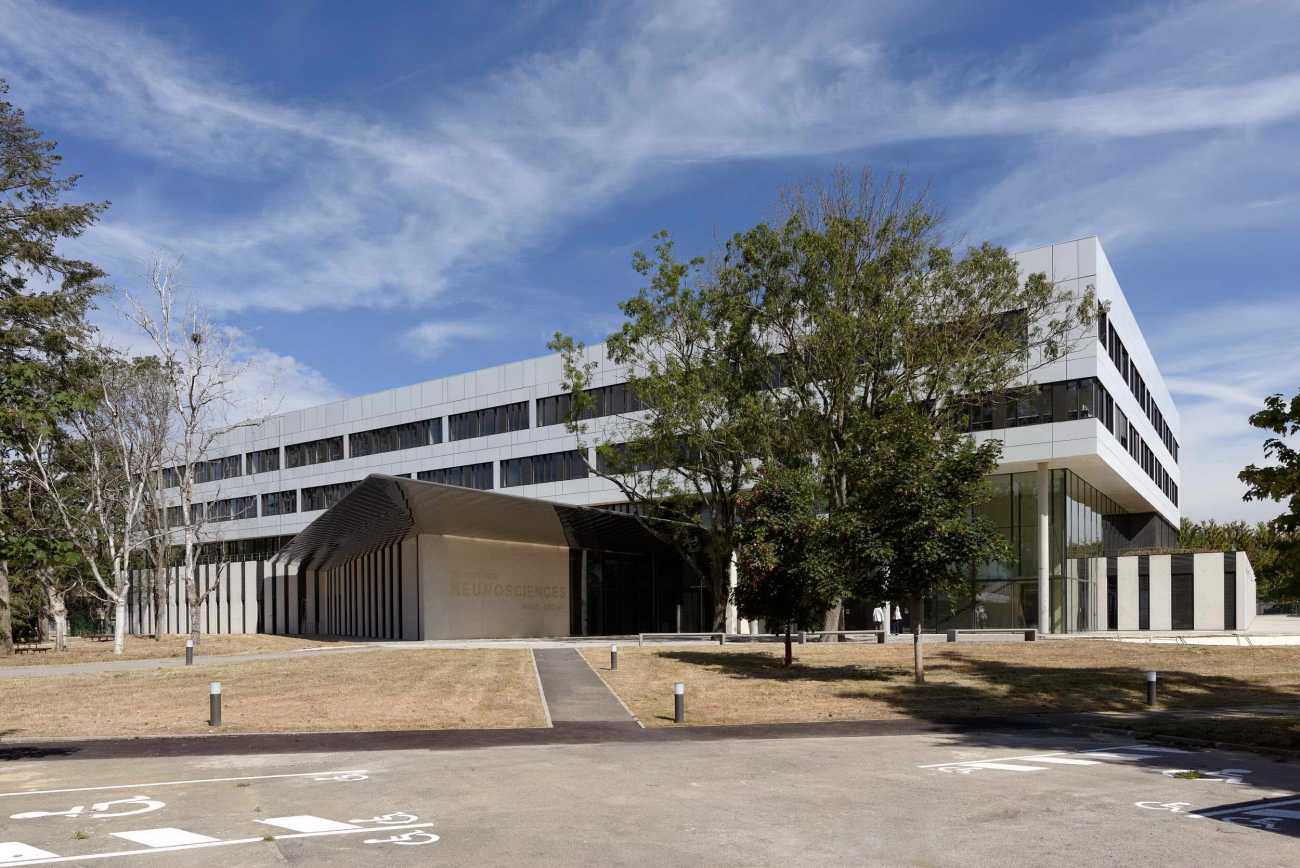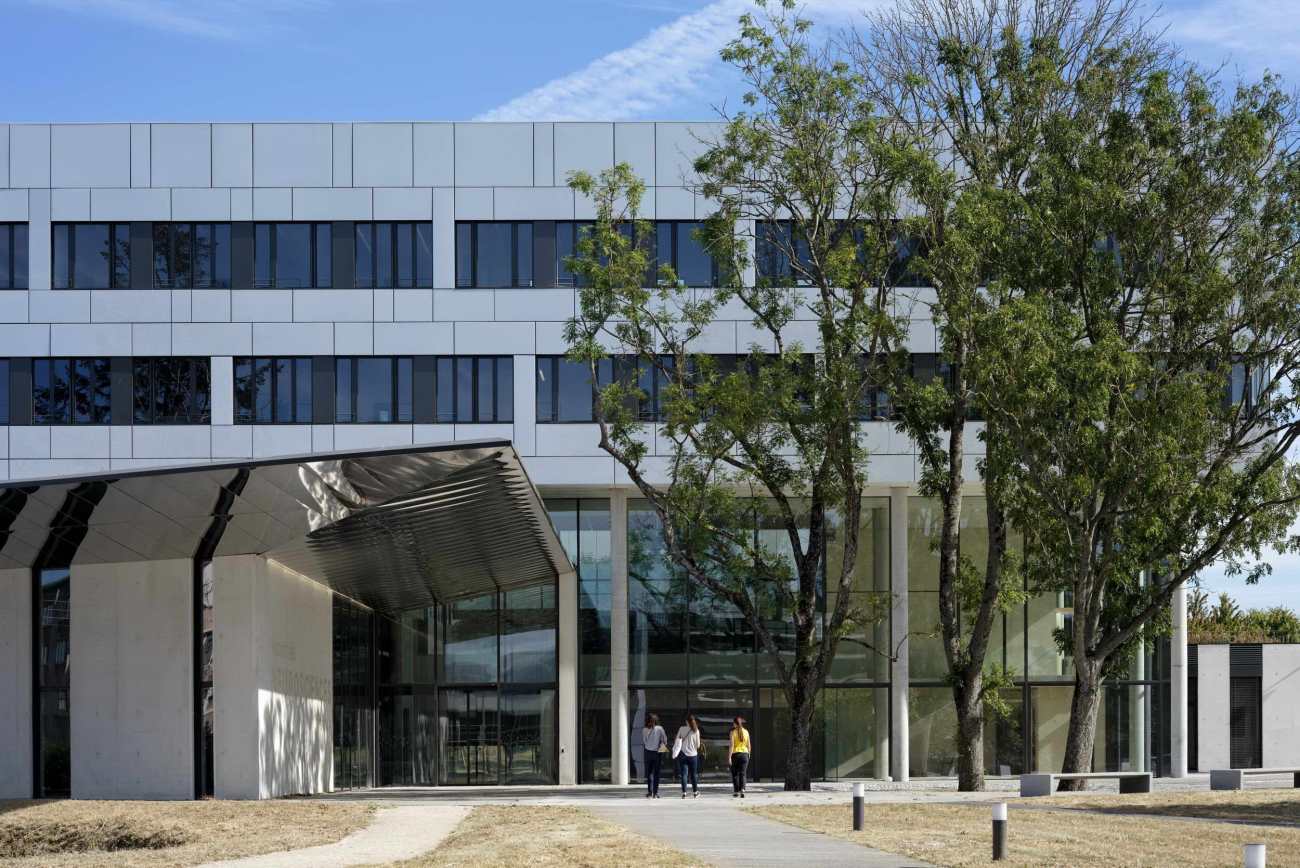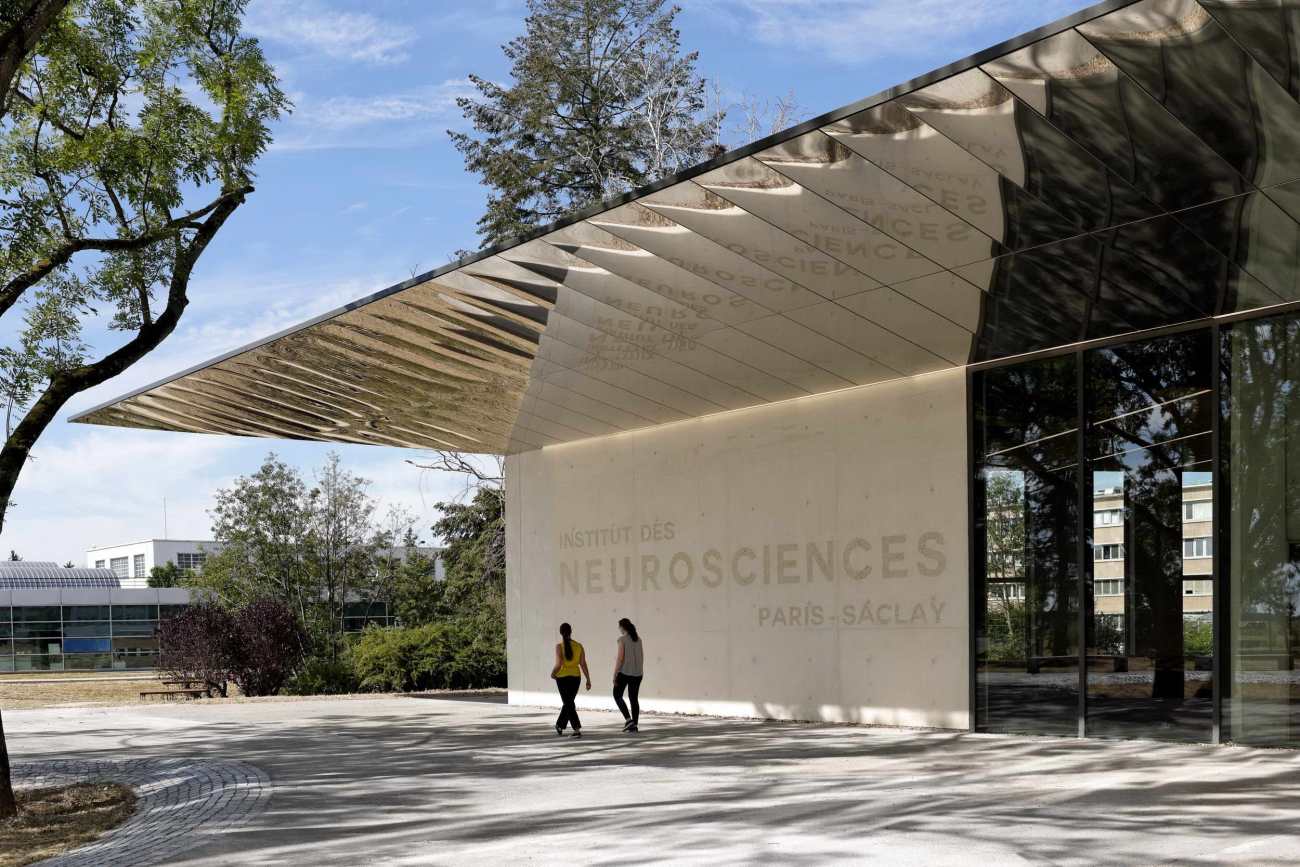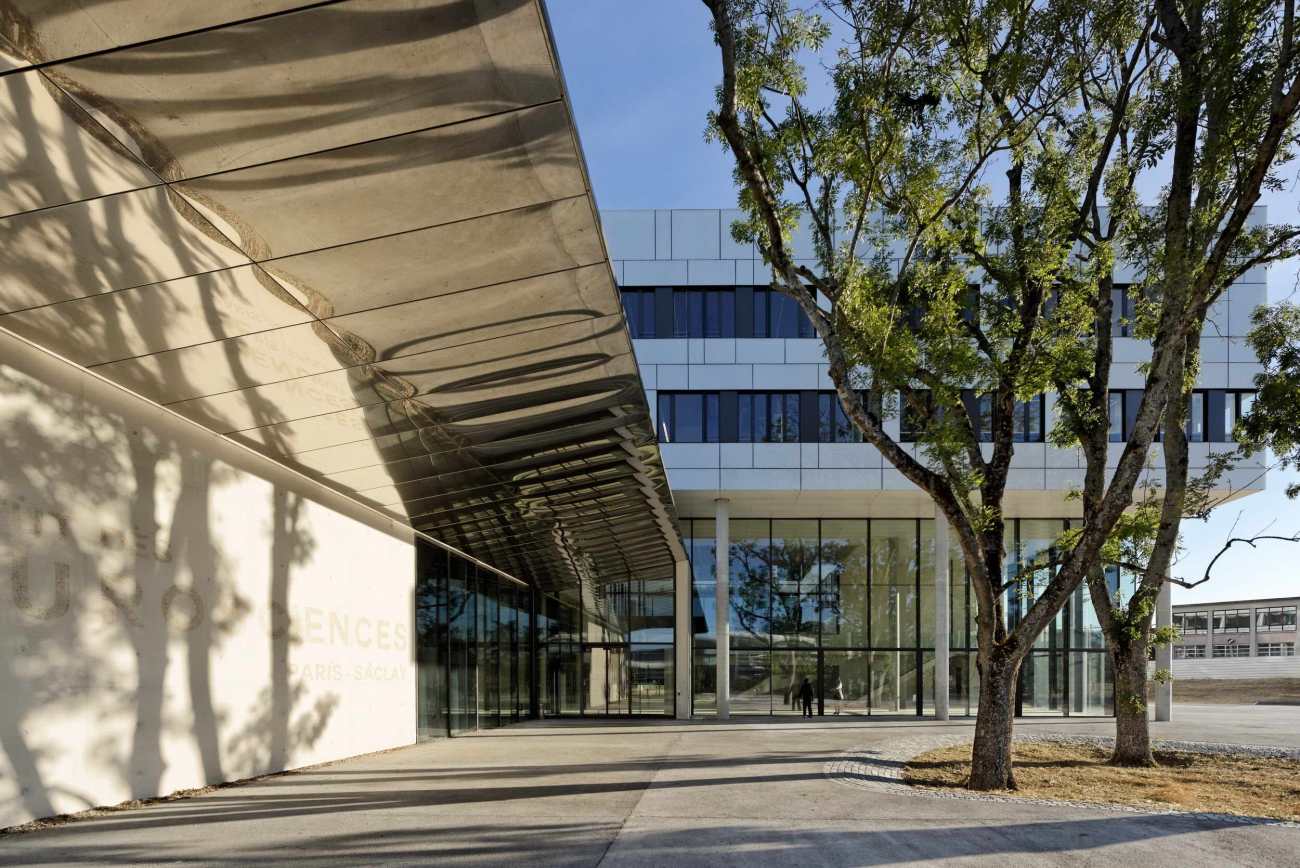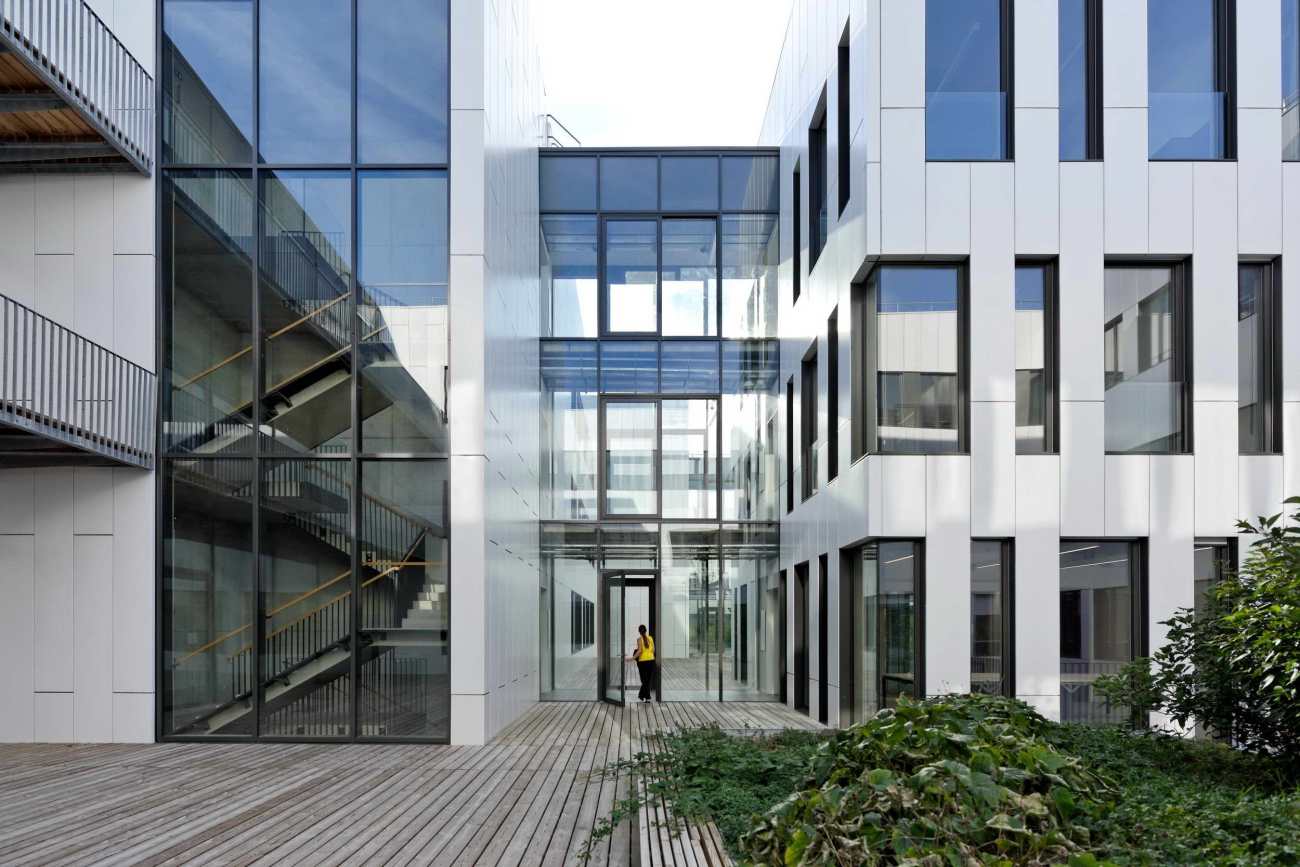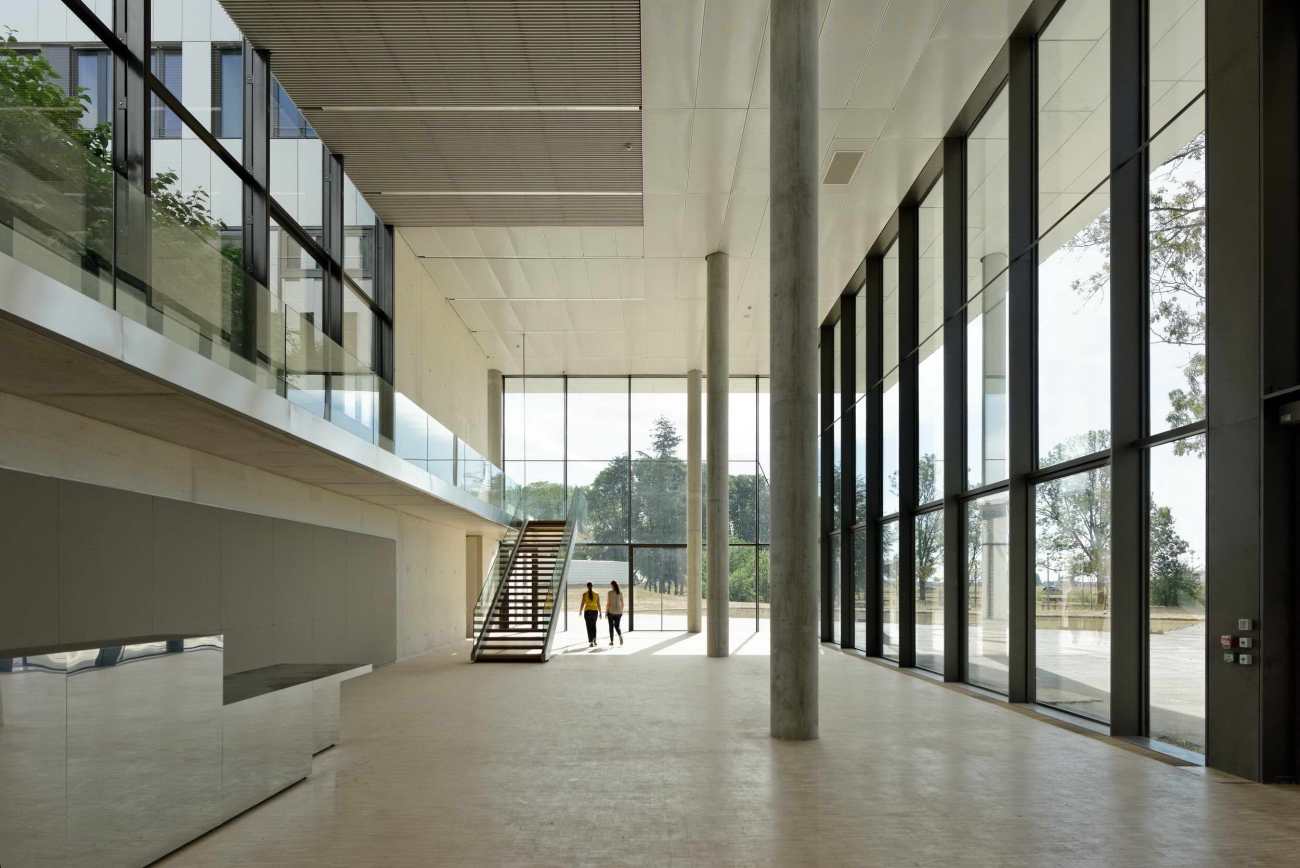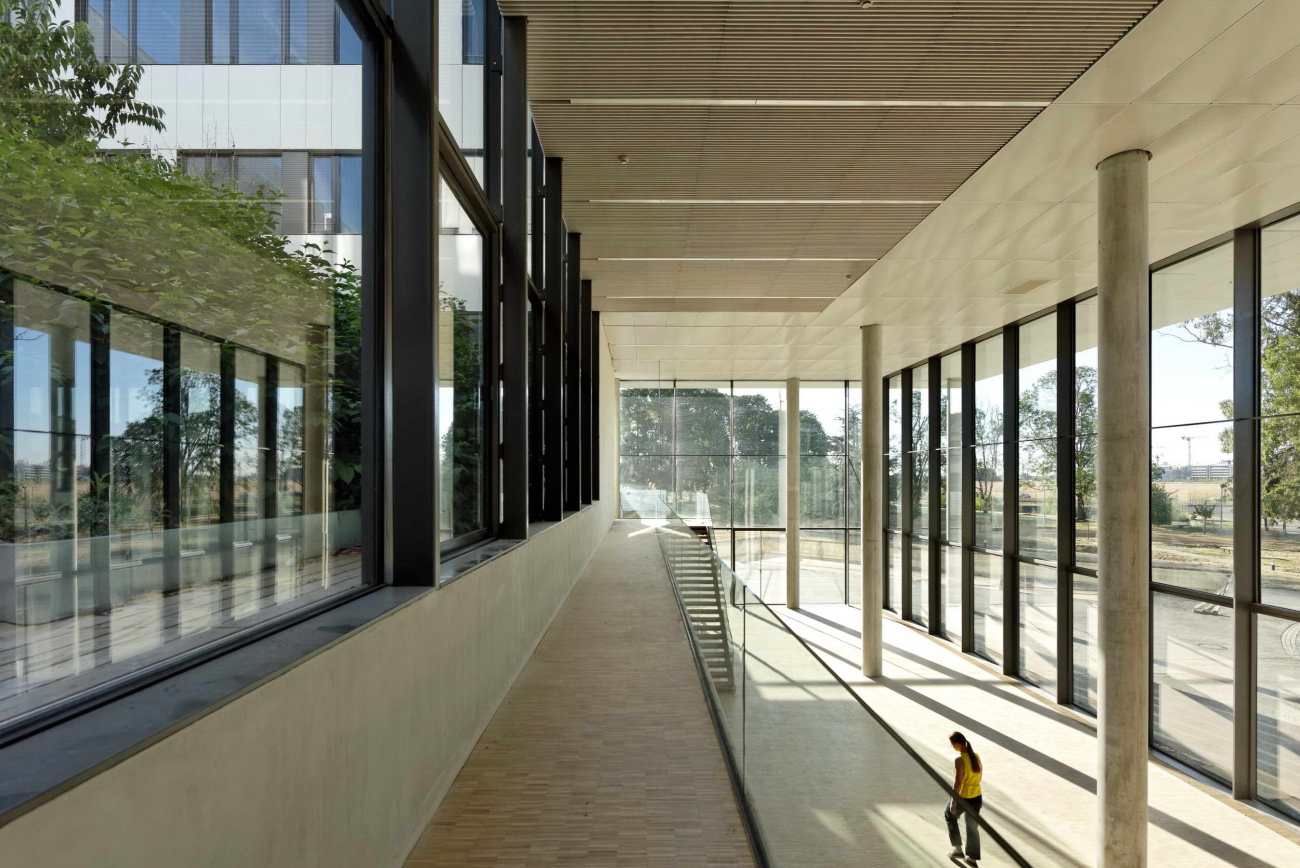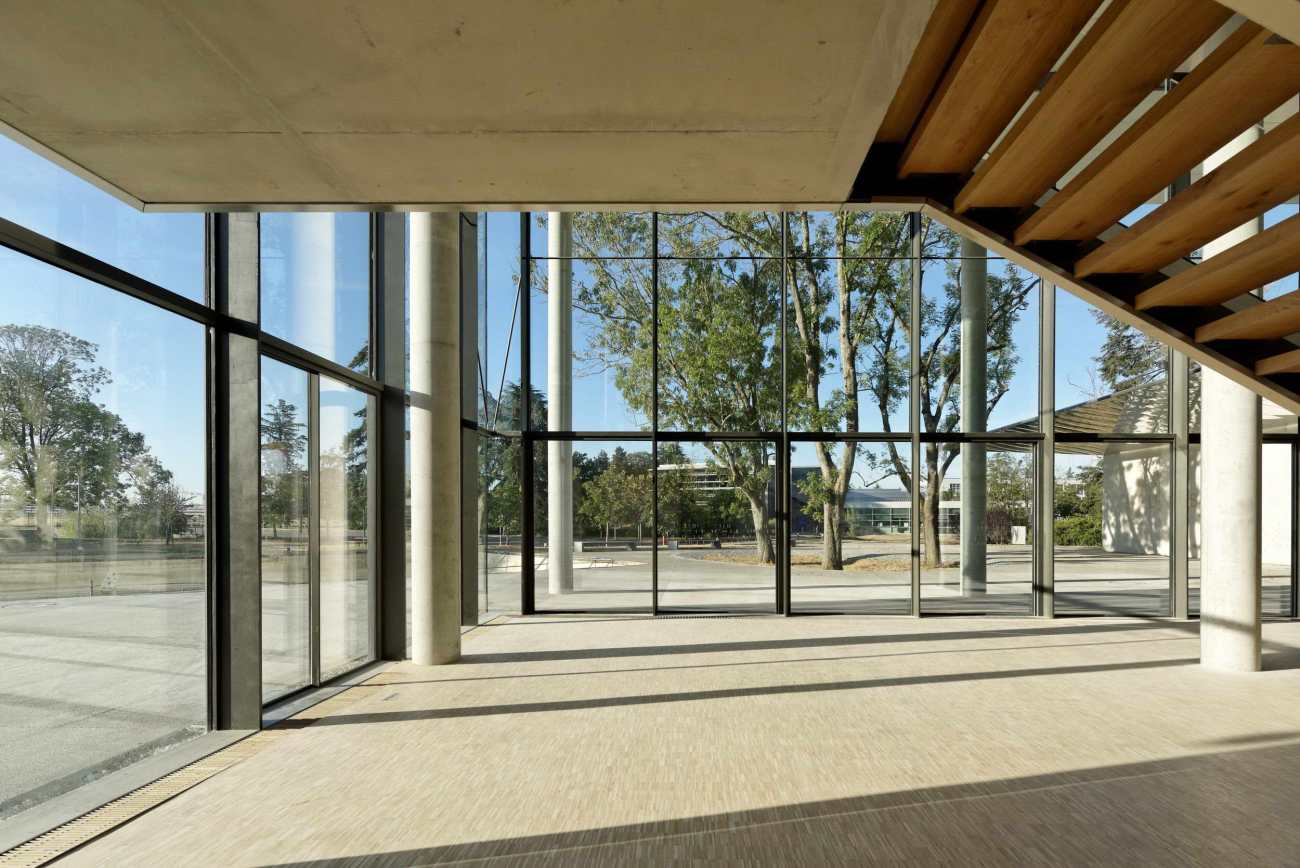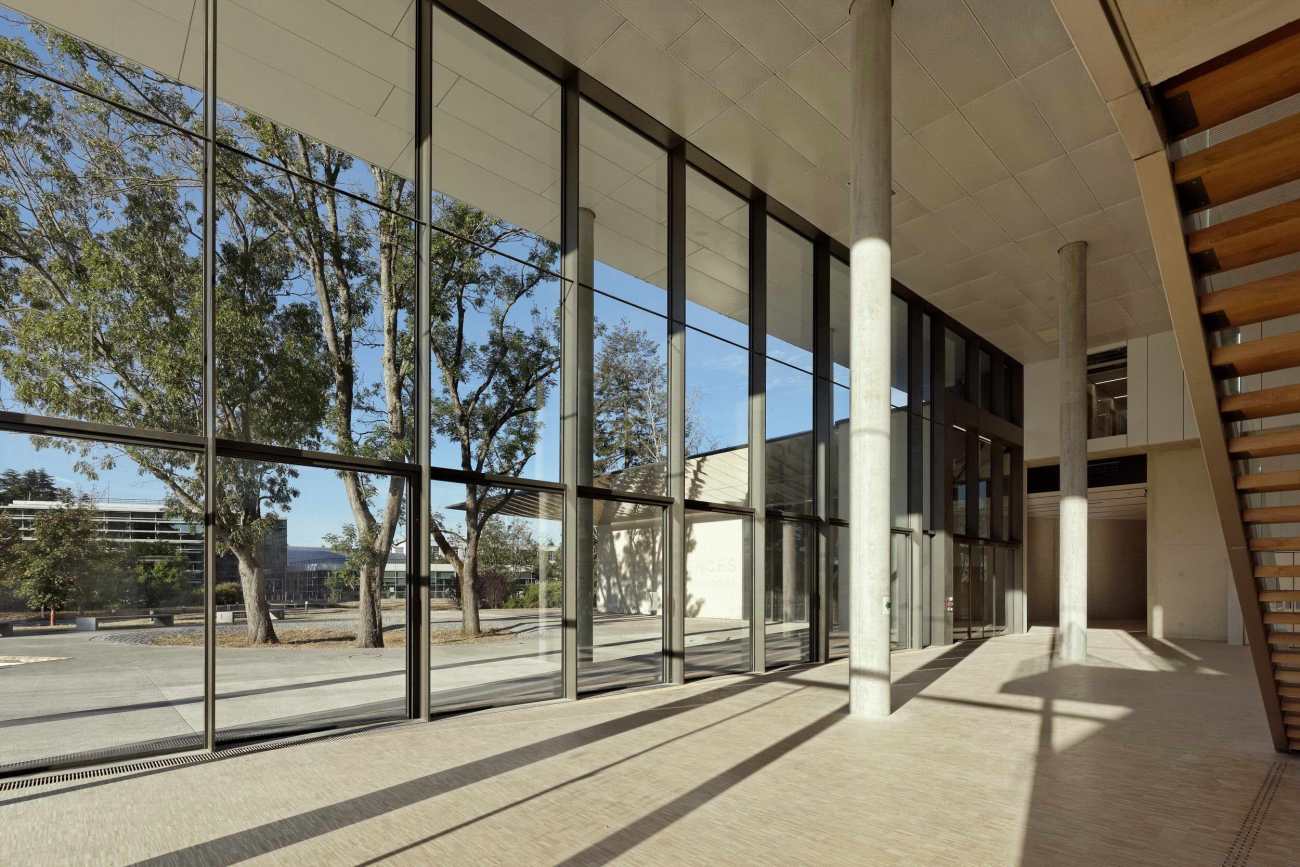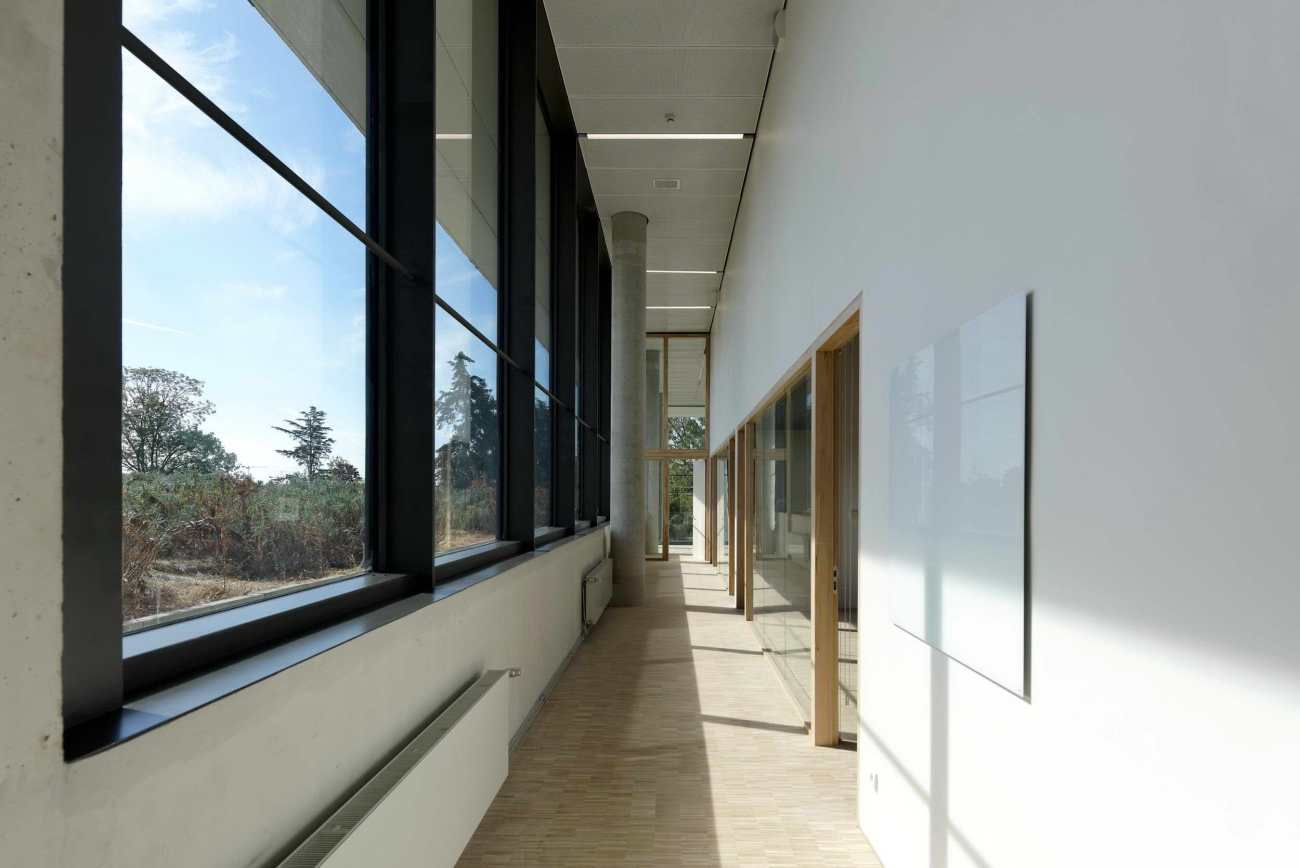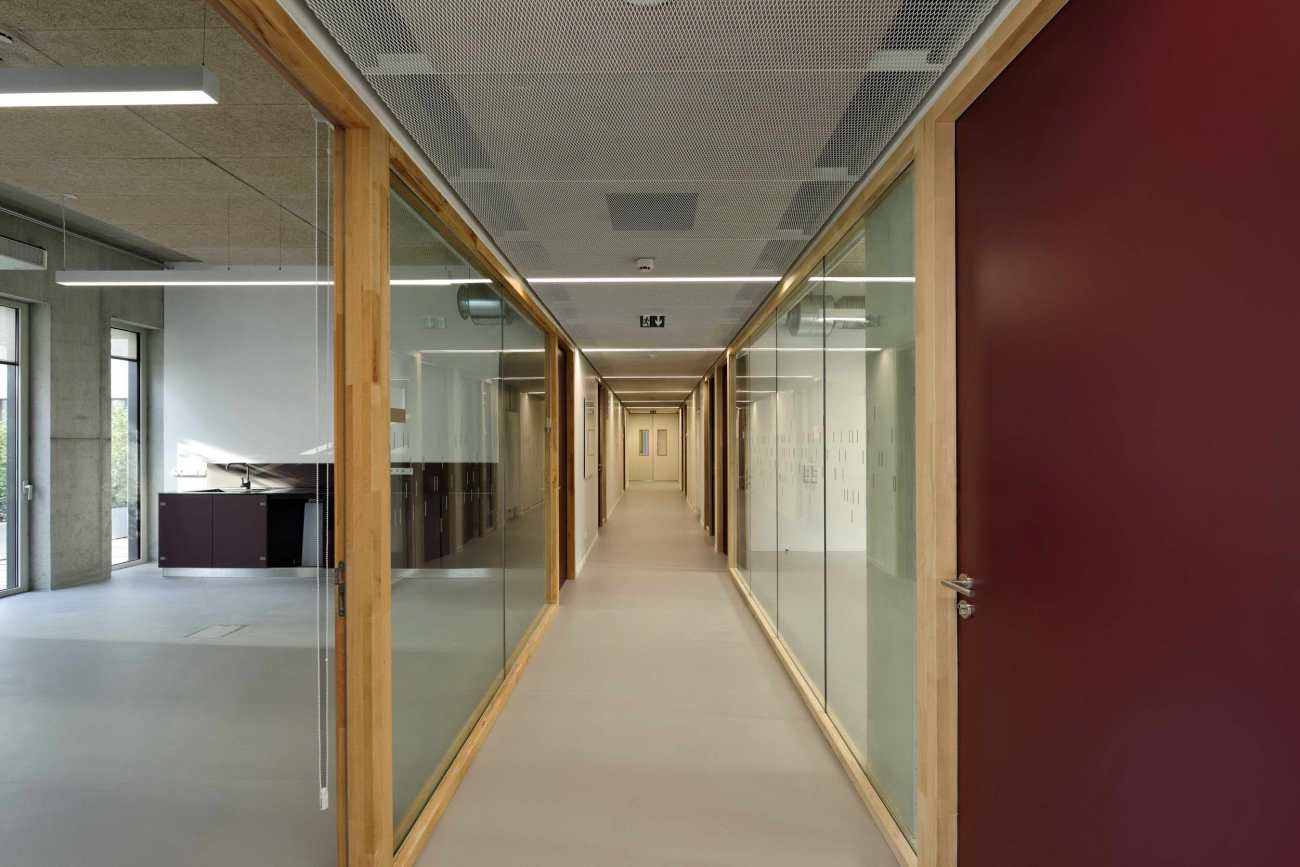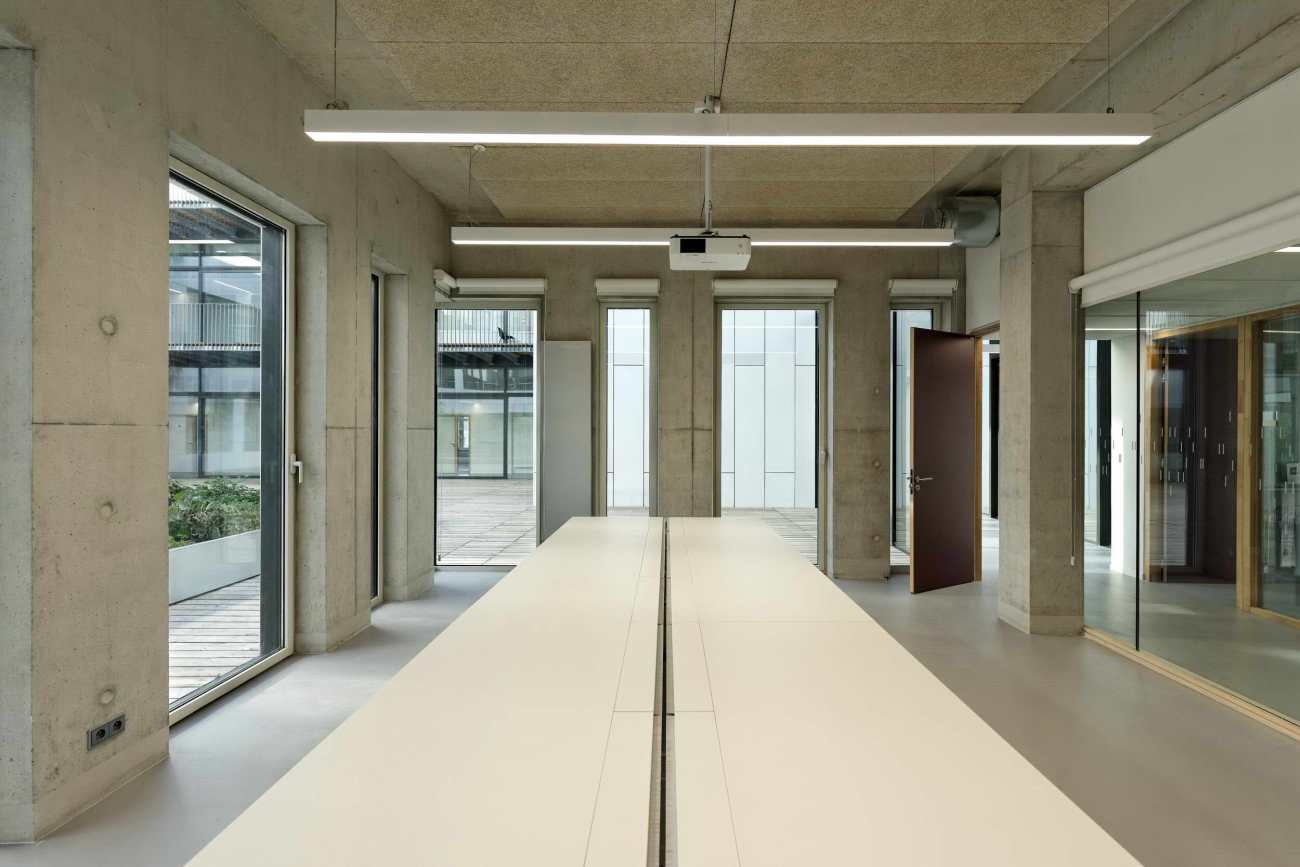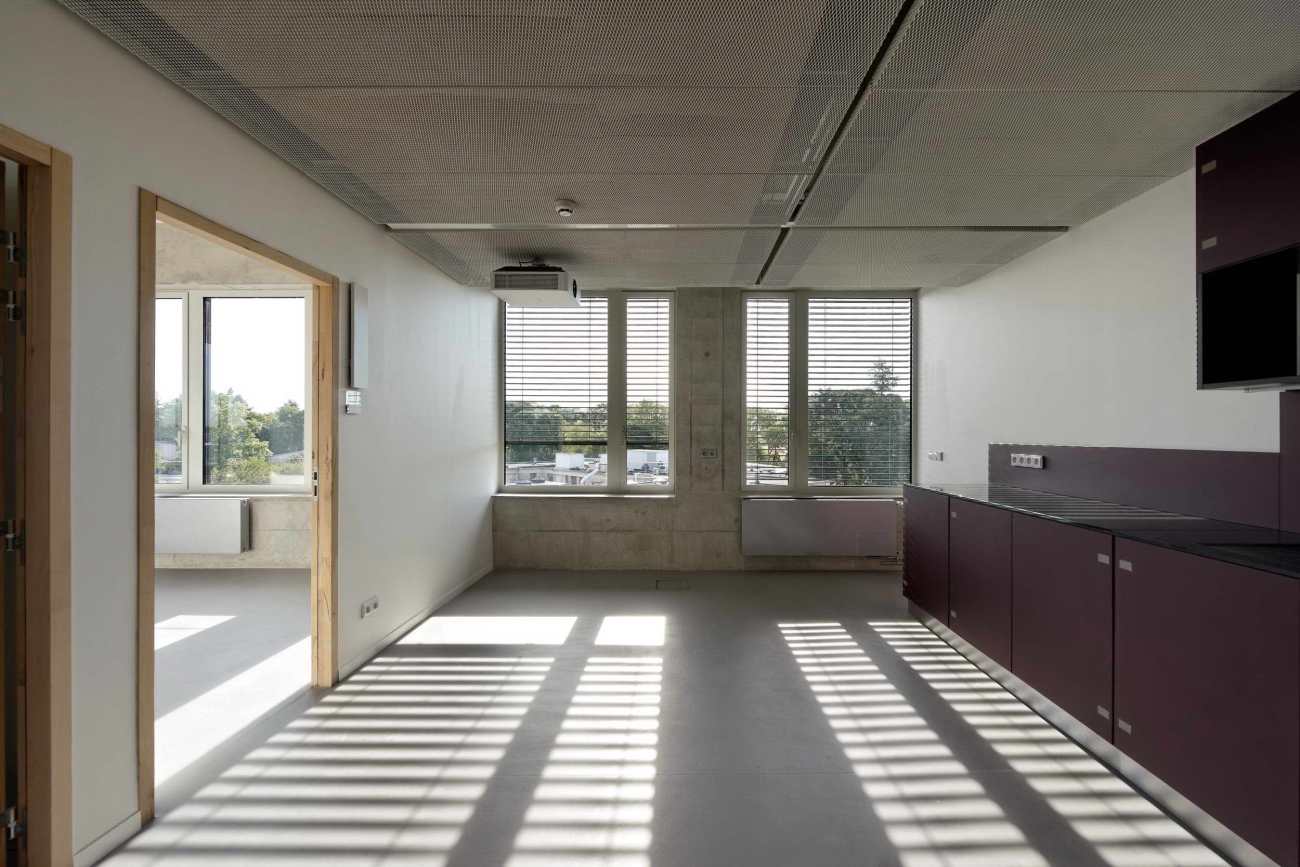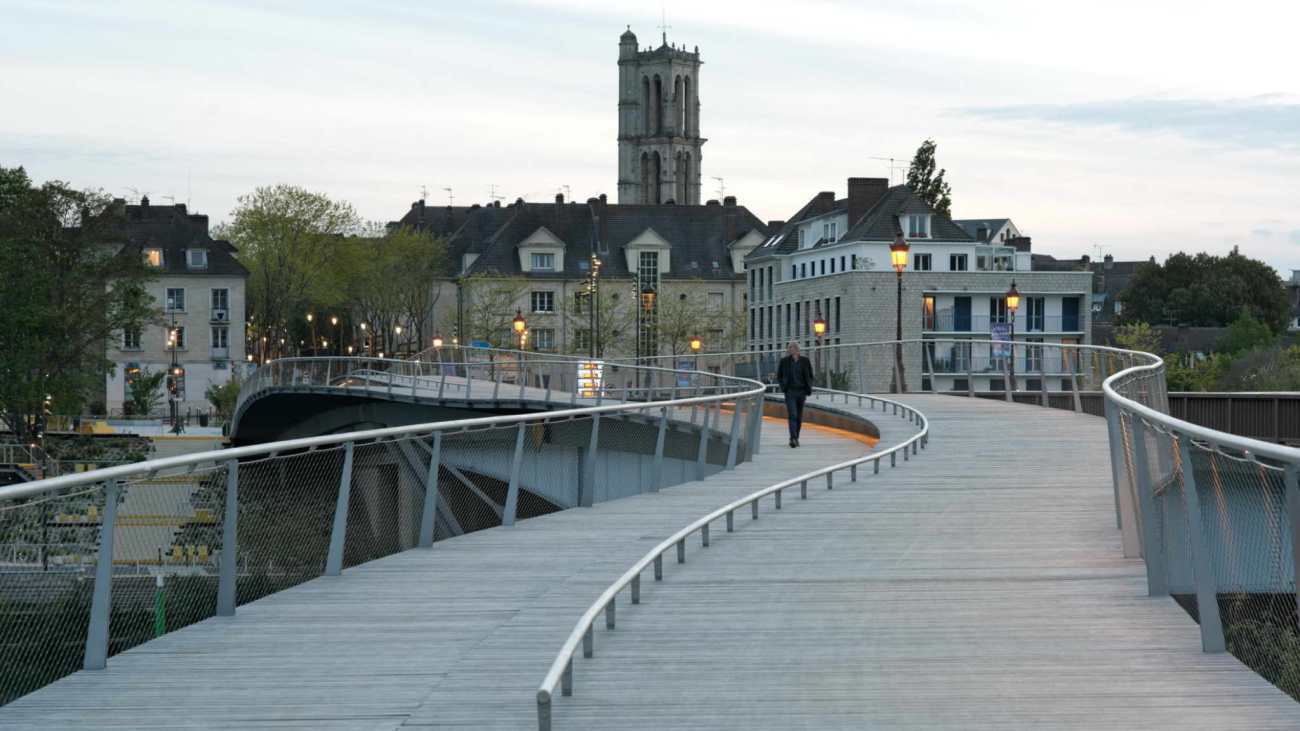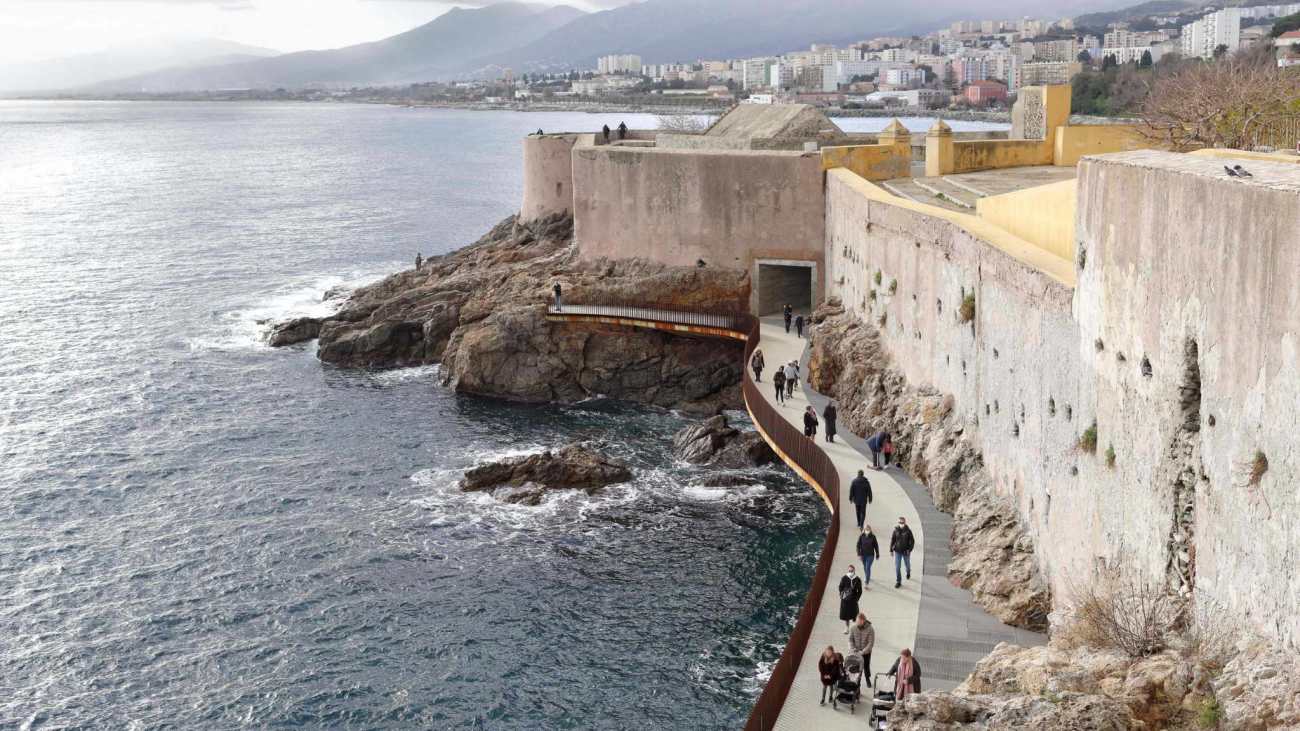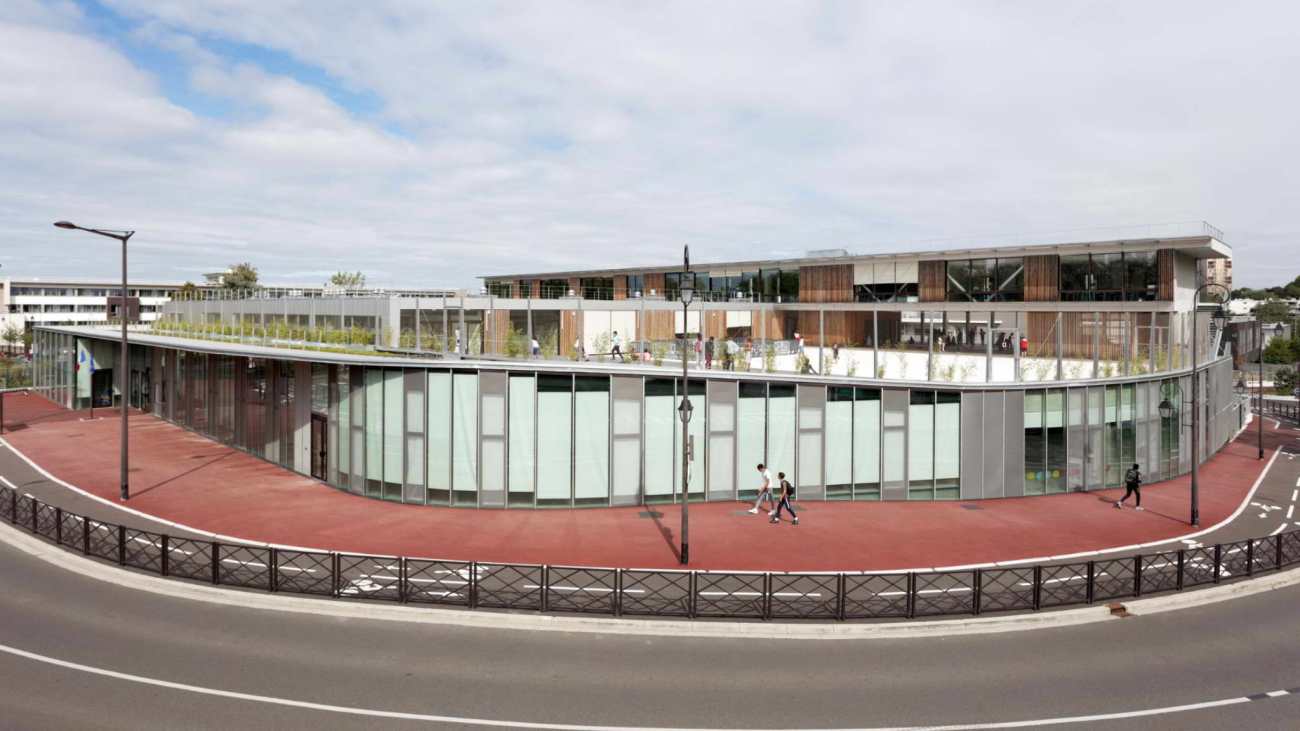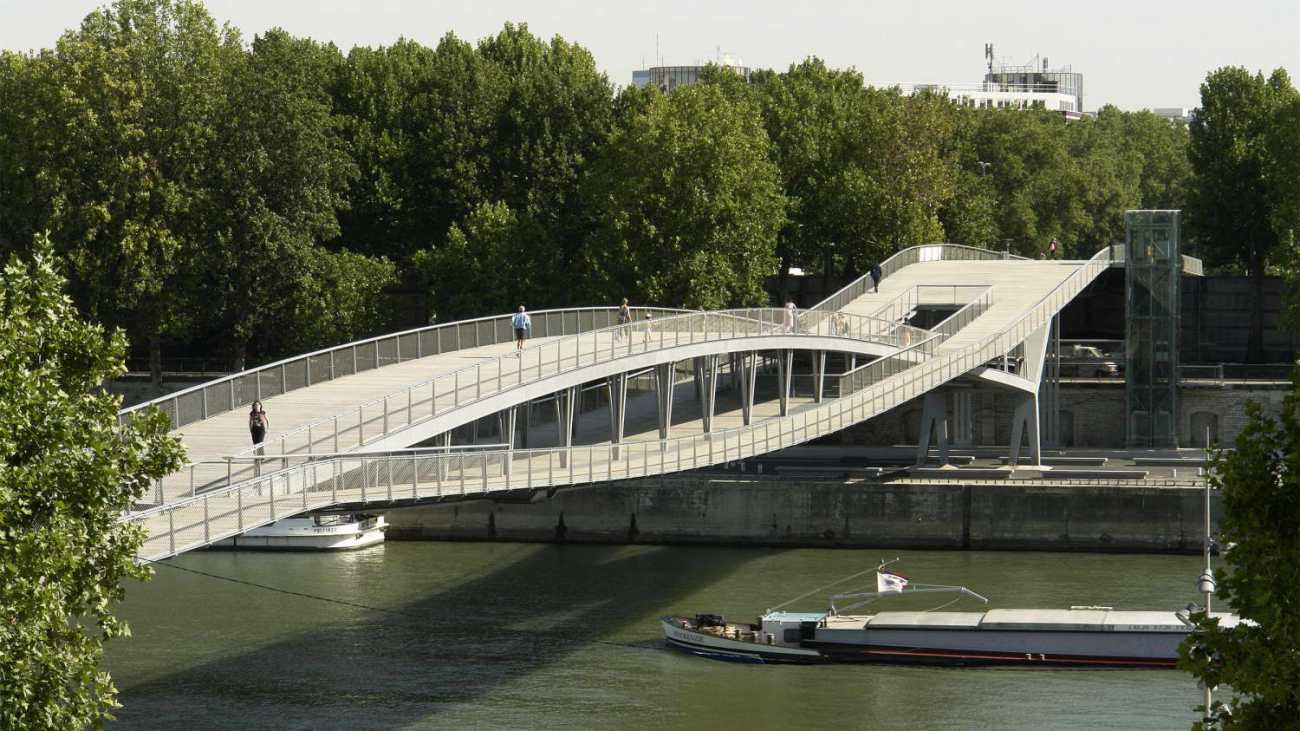| 公司: | Dietmar Feichtinger Architectes | 类型: | 建筑 |
|---|---|---|---|
| 地区: | 法国 | 标签: | 校园 |
研究人员的家
项目是法国即将建成的大型精英大学校园,位于巴黎以南二十公里处,一个国际科技研究中心正在这个校园里建设,项目主要是能源、环境技术和健康领域的领先研究机构,这是法国对标美国的哥伦比亚大学和哈佛大学等美国大学的回应。法国当局已经为此拨出了近三万亿欧元的专款,2013年,当局宣布了一个神经科学研究所的竞赛,约有350名科学家和40名学生参加。在59家来自世界各地的建筑事务所中,领队Dietmar Feichtinger 建筑事务所与Celnikier & Grabli建筑事务所赢得竞赛。该建筑于2020年3月交付使用。
A house for researchers and research
The “Plateau de Paris-Saclay” is the upcoming major elite university campus in France. It is the French answer to American universities such as Columbia and Harvard. Situated twenty kilometers south of Paris an international center for technological research is being built on this campus. Over the long term, nearly three thousand billion euros have been earmarked for this purpose. (https://en.wikipedia.org/wiki/Paris-Saclay) The CEA (Commissariat à l'énergie atomique) is a leading research institution in the fields of energy, environment technology and health. In 2013, it has announced an invited competition for a neuroscience institute for about 350 scientists and 40 students. 59 offices applied, and the winning project was designed by Dietmar Feichtinger Architectes, the lead team, together with Celnikier & Grabli Architectes. The building was delivered in March 2020.
技术和科研条件
建筑师Dietmar Feichtinger解释说:"确保科研条件持续受控是一项挑战,同时还要创造空间品质,包括自然日光、新鲜空气以及与周围环境的关系。我们设法在这两个方面实现了同等的优先权。”所需的区域如研究、实验室、办公室、门厅和礼堂等都有不同的出入限制,这也是空间连贯的组织本身的结果。三个切开的无障碍内院和透明的桥梁创造了日光照射的工作和实验室空间,也包含了现代研究必不可少的非正式交流区域。
Technology and well-being
"It was a challenge to ensure constantly controlled conditions for scientific research," explains architect Dietmar Feichtinger "and at the same time to create spatial qualities including natural daylight, fresh air and a relationship with the surroundings. We managed to fulfil both aspects with equal priority". The required areas - research, laboratories, offices, foyer, and auditoriums - are subject to various access restrictions, which result from the coherent organization itself. Three incised and accessible inner courtyards and transparent bridges create work and laboratory spaces lit by daylight, as well as the informal communication areas essential for modern research.
“扭曲”的体验
神经科学研究所被树木包围,靠近CEA的原子研究所,这将产生协同效应。"我们希望保护树木,以便将礼堂融入校园公园的景观中,同时创造一个公共空间。"Dietmar Feichtinger解释道。低矮的三角形入口位于四层立方体建筑的南部,长95米,宽50米。它的框架是一个带水盆的前庭,它与邻近的研究建筑的轴线一致。前院建筑的屋顶略微向上倾斜。它的底部由抛光不锈钢制成,以一种看似扭曲的视角反映环境。根据不同的视角和日光,它显得不同。这种变化的感觉伴随着通往学院入口的道路。它位于礼堂和门厅之间。抛光的不锈钢映入接待区,单层楼梯通向一楼的画廊。八米的层高,转角玻璃和橡木拼花地板营造出一个温馨的门厅,同时也是通往礼堂和研讨室的通道。这里是研究所的名片,也是研究所与公众交流的地方:在这里可以举办各种活动,通过宽大的玻璃门可以延伸到前院。
Distorted perception
Surrounded by trees, the Institute of Neurosciences is close to the CEA's atomic research, which will create synergies. "We wanted to preserve the trees in order to fit the auditorium into the landscape of the campus park and at the same time create a public space" explains Dietmar Feichtinger. The low, triangular-shaped entrance rises to the south of the four-story cubic building, which is 95 meters long and 50 meters wide. It frames a forecourt with a water basin, which follows the axes of the neighboring research buildings. The roof of the entrance building tapers slightly upwards. Its underside, made of polished stainless steel, reflects the environment in a seemingly distorted perspective. Depending on the angle of view and daylight, it appears different. The changing perception accompanies the path to the entrance of the institute. It is located between the auditorium and the foyer. The polished stainless steel is reflected in the reception area, a single flight of stairs leads to the gallery on the first floor. Eight meters of room height, corner glazing and oak parquet flooring create a welcoming foyer that also provides access to the auditorium and seminar rooms. This is the Institute's calling card and its interface with the public: events can be organized in this space, which extends to the forecourt through wide opening glass doors.
研究核心空间
混凝土板和狭窄的玻璃缝隙组成的外墙环绕着后面的研究区。神经元的功能是在鱼等生物体上进行研究的,这些生物被保存在恒温(水温、光照)的水族箱中。这适用于所有有动物的实验室。建筑师将这些严格管理的区域集中在底层和地下室,具有很高的技术要求。它们构成了研究所的核心:一个带有水族馆、围栏和实验室的走廊示意图。完美的细节,协调的材料和功能,是Feichtinger事务所的一贯作风。这些细节对于这座建筑来说是不可缺少的。用于神经学研究的白色无缝机房看起来几乎是抽象的,一个独立的技术楼层被纳入其中。后面的装载区用于运送动物饲料、生物体和废物收集。空间需求不断变化:钢筋混凝土制成的支撑结构允许各种实体根据需要重新规划。
The central part for research
A facade of concrete panels and narrow glass slits surrounds the research area behind it. The functioning of neurons is studied on living organisms such as fish. These are kept in aquariums under constant conditions (water temperature, light). This applies to all laboratories with animals. The architects have concentrated these strictly regulated areas, with their high technical requirements, on the ground floor and the basement. They form the core of the institute: a schematic circuit of the corridors with aquariums, enclosures, and laboratories. Perfect details, coordinated with material and function, characterize the work of Feichtinger Architectes. They were indispensable for this building. The white, seamless machine room for neurological research seems almost abstract - a separate technical floor was incorporated for its operation. A loading area at the back is used for the delivery of animal feed, living organisms and waste collect. Spatial requirements are constantly changing: a supporting structure made of reinforced concrete allows the various entities to be reprogrammed as required.
最佳的工作场所和研究空间
大约350名科学家在二层工作。开放式的房间拥有充足的日光、美丽的景色和宽敞的流通区域,为交流创造了最佳的工作条件。非正式的交流是科学创新的基础。三个带有绿色植物和阳光露台的内院是开放的可控室外空间。这里是人们喜欢消磨时间和相互交流的地方,这些庭院也为建筑深处的办公室和实验室提供了自然光。70厘米的低窗护栏加强了自然光。开放式装置沿着暴露的混凝土天花板延伸,办公室的天花板上配备了基于木纤维的隔音板,欢迎浅灰色的橡胶地板。走廊一侧的墙壁部分由玻璃制成,创造了一个友好和透明的氛围。在这里,灵活性也得到了最大限度的发挥。"我们可以将办公室转变为实验室,将实验室转变为办公室。"Feichtinger说:“网格、承重通道核心和轻质结构墙体使之成为可能。”
An optimal workplace and research space
About 350 scientists work on the upper levels. Open rooms with plenty of daylight, beautiful views and generous circulation areas invite for exchange and create optimal working conditions. Informal communication is the basis for scientific innovation. Three inner courtyards with greenery and sun terraces serve as open controlled outdoor spaces. This is where people like to spend time and meet each other. These courtyards also provide natural light for the offices and laboratories in the depth of the building. Low window parapets of 70 cm enforce the natural light. Open installations run along the exposed concrete ceiling. The offices are equipped with wood fiber based soundproofing panels on the ceiling, welcoming light grey rubber floors. The walls on the corridor side are partially made of glass. This creates a friendly and transparent atmosphere. Here too, flexibility is maximized. "We can transform offices into laboratories and laboratories into offices," says Feichtinger. The grid, load-bearing access cores and lightweight construction walls make this possible.
第三层结构清晰。沿着朝向庭院的金属板和朝向外部的乳白玻璃板制成的外立面的水平窗条,办公室和实验室沿着一条明亮的中央走廊排列,另外两条走廊以直角形式延伸。这些走廊通过玻璃走道连接到对面的办公室和实验室。"这座建筑非常高效。"Feichtinger说:"走道创造了简短的连接路径。”交织在一起的翼楼与人行天桥将开放的内部空间划分为三个庭院。大约15米宽,24米长,它们在建筑体量中对角线移动,彼此之间略有偏移。因此,它们回应了办公区域的不同深度,创造了单独的位置,并允许通过开放空间探索建筑。Dietmar Feichtinger说:"在这里做研究的人应该互相认识--这就是为什么我们有吸引人的户外天井,当然你也可以在这里工作。通道的设计非常吸引人。通过玻璃通道,你可以看到院子、宽大的楼梯和画廊。你不一定要等电梯,你被邀请走上楼梯。”
The three levels are clearly structured: Along the horizontal window stripes of the facade made of metal panels towards the courtyards and opal glass panels towards the outside, the offices and laboratories are aligned along a bright central corridor, from which two further corridors run at right angles. These corridors are connected by glass walkways to the offices and laboratories opposite. "The building is very efficient," says Feichtinger. "The walkways create short connecting paths." The interwoven wings with the footbridges divide the open interior space into three courtyards. Approximately 15 meters wide and 24 meters long, they move diagonally through the volume of the building, slightly offset from each other. Thus, they respond to the different depths of the office areas, create individual locations, and allow to explore the building via the open spaces. "People who are researching here should meet each other - that's why we have attractive outdoor patios, where you can also work of course", says Dietmar Feichtinger. The access areas are very attractively designed. Through the glazed walkway you can see the yards, the wide staircases and the galleries. "You're not necessarily supposed to wait for the lift, you're invited to walk up the stairs."
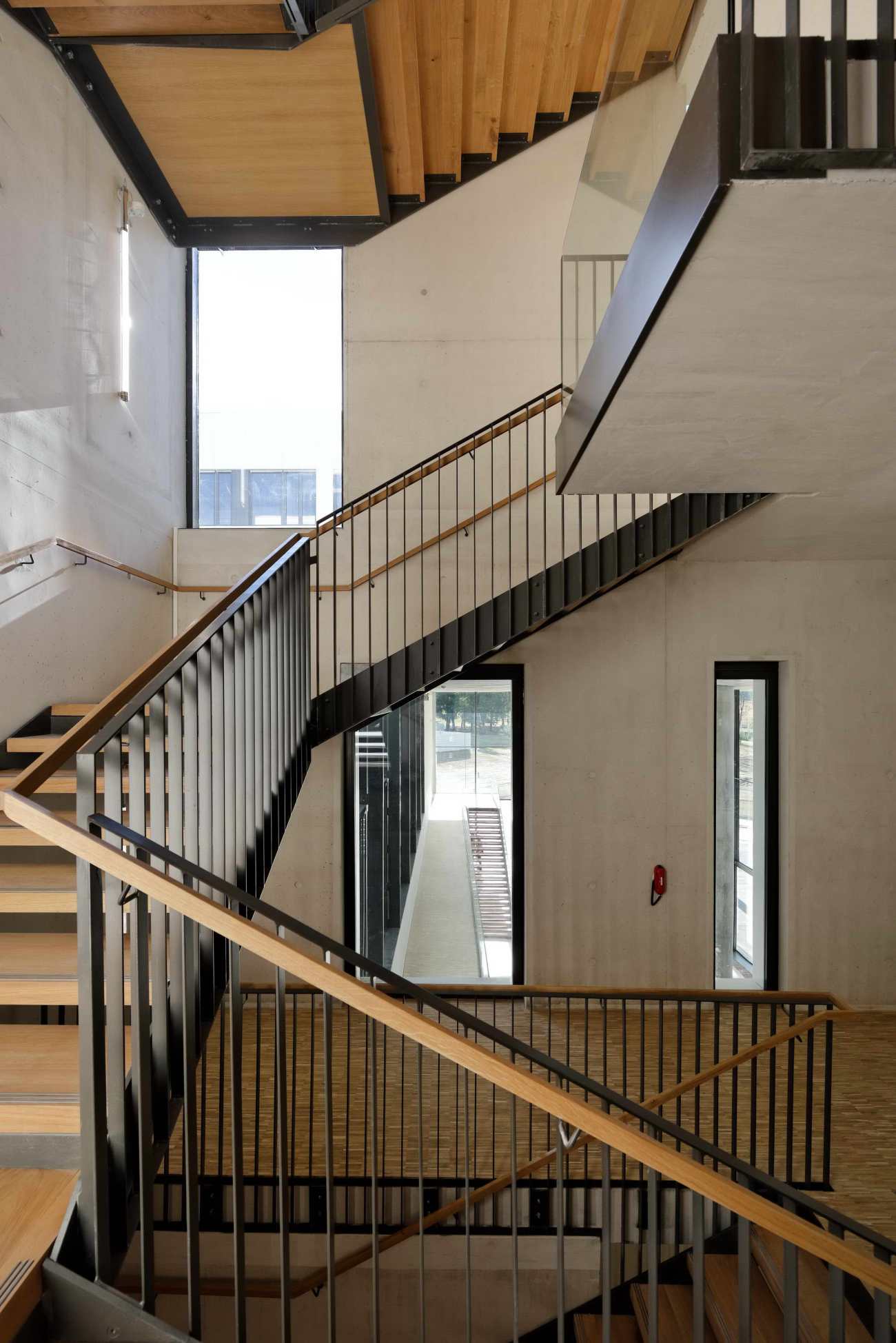 |  |
Project: Campus CEA Paris-Saclay | Neuroscience Institute
Address: CEA Saclay, R.D 306 , 91191 Gif-sur-Yvette
Client/Address: CEA - Commissariat à l'énergie atomique et aux énergies alternatives
Bat 530, PC n° 98, 91191 Gif-sur-Yvette, France
Architect: Dietmar Feichtinger Architectes
Engineers: INGEROP, BET
Contractors: ML1 : Leon Grosse
Site area: Campus Paris-Saclay,- territoire de Paris-Saclay
Floor area: SU: 19 046,78 m², SP: 16 653 m²
Built-up area: Emprise au sol de l'opération: 6480 m², Surface Parking : 1464 m², Surface Parvis : 3741.1 m²
Competition: 27 01 2014
Start of planning: 06 2014
Start of construction: 04 2016
Completion: 03 2020
Building costs: 34 395 000 €
Photo Credit: David Boureau
更新日期:2021-04-16 14:56:47
非常感谢 Dietmar Feichtinger Architectes 带来的精彩项目, 查阅更多Appreciations towards Dietmar Feichtinger Architectes for sharing wonderful work on hhlloo. Click to see more works!
